Fall-Flowering Gardens: Creating Color And Interest With Fall Garden Plants


Flower gardens need not be restricted to spring and summer enjoyment. There are many plants that bloom throughout the fall season as well. In fact, fall flowering gardens not only provide extended blooming, but foliage, berries, bark and other focal points can also provide additional color and interest. Additionally, plants for fall gardens offer food and shelter to wildlife at a time when it may otherwise be scarce.
Fall Garden Planting Guide
Knowing when, where and what to plant in the fall garden is important. The best time to plant a fall garden is late September through early October, depending on where you live. In order to be successful in planting, check the hardiness zone for your particular area beforehand. This will also come in handy for choosing appropriate plants for fall gardens.
Fall Garden Plants
There are a number of plants for fall gardens. Let's take a look at some of the most common fall garden plants for ideas.
Flowers
Flowering plants include a variety of annuals, bulbs, and perennials. Many cool-season annuals work well in fall-flowering gardens, such as snapdragons, pot marigolds, and pansies. These types of annuals are available in a variety of colors so finding one that suits your taste shouldn't be a problem. Bulbs such as toad lilies, autumn crocus, and cyclamen also do well in a fall-flowering garden. Numerous perennials also bloom during autumn and provide additional interest throughout winter too. Some of the most popular fall-blooming perennials include asters, chrysanthemums, and goldenrods.
Trees and Shrubs
Trees and shrubs help give the fall-flowering gardens additional shape, texture, and color. Once flowering bulbs and other plants have begun to fade, the intense shades of leaf color, ranging from yellow and orange to red and purple, create a stunning display. Japanese maples and witch hazels are commonly seen in the fall-flowering garden, providing brilliant fall foliage. Most of us think of the blooms as the major attraction on a rose bush. However, did you know there are many rose varieties that offer colorful fall foliage as well, such as Virginia Rose and Blue Rambler? Their leaf color can be further enhanced by placing them among a background of evergreens. When choosing trees and shrubs for fall-flowering gardens, you should also consider their bark characteristics. For instance, those that peel or provide unusual color can be quite appealing in the fall-flowering garden.
Ornamental Grass and Ground Covers
Ornamental grasses generally reach their peak during autumn, adding texture, volume, and color to the fall-flowering garden. Many of these develop seed heads after flowering has ceased, and their foliage turns golden-brown. Berries also ripen in the fall and supply additional color and interest with shades of red, purple, and yellow. There are many ground covers that produce berries and have colorful leaves. Even some of the evergreen varieties make attractive additions.
Ornamental Veggies
Ornamental veggie plants can also complement other fall-bloomers. For instance, ornamental kales range in color from white to red with green or purple foliage. Ornamental peppers produce bright red fruits that cover the plant, creating a unique presence in the fall-flowering garden. Additional features for fall-flowering gardens include focal elements such as statues, ponds, stones, arbors, etc. Creating a fall-flowering garden can extend seasonal interest beyond the spring and summer months; and many fall garden plants will continue to thrive for years to come.
Gardening tips, videos, info and more delivered right to your inbox!
Sign up for the Gardening Know How newsletter today and receive a free download of our most popular eBook "How to Grow Delicious Tomatoes."

Nikki Tilley has been gardening for nearly three decades. The former Senior Editor and Archivist of Gardening Know How, Nikki has also authored six gardening books.
-
 Clever Vertical Vegetable Garden Ideas For Small Spaces – 7 Ways To Save Space
Clever Vertical Vegetable Garden Ideas For Small Spaces – 7 Ways To Save SpaceShort on garden space? Learn some vegetable garden ideas for small spaces that are fun and easy.
By Mary Ellen Ellis
-
 26 Different Types Of Orchids – With Pictures & Information
26 Different Types Of Orchids – With Pictures & InformationDiscover stunning orchid types to grow in your home and garden – from easy beginner varieties to rare and exotic species that are the preserve of experts.
By Melanie Griffiths
-
 20 Hard-to-Find Spring Flowers & Plants That Look Amazing All Season
20 Hard-to-Find Spring Flowers & Plants That Look Amazing All SeasonIt’s finally beginning to look like spring! If you’re eager to find some unique, hard-to-find varietals to satisfy your spring fever, look here first.
By Caroline Bloomfield
-
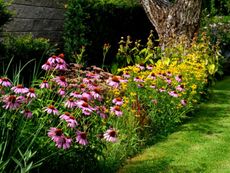 How Wildflower Strips Help Attract Pollinators To Your Yard
How Wildflower Strips Help Attract Pollinators To Your YardIf you have a small garden spot or strip available, fill it with wildflowers for our hungry pollinators. Click to learn more.
By Tonya Barnett
-
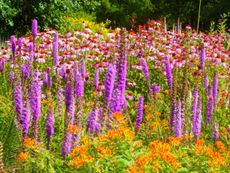 10 Knockout Native Flowers For A Punch Of Color
10 Knockout Native Flowers For A Punch Of ColorGrowing native is the way to go. See our list of ten native wildflowers that will knock you out with color.
By Amy Grant
-
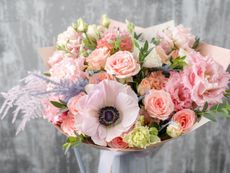 Pretty Plants For A Pastel Flower Bouquet
Pretty Plants For A Pastel Flower BouquetRoses aren’t the only romantic flower. Some romantic pastel flowers can fill in beautifully.
By Tonya Barnett
-
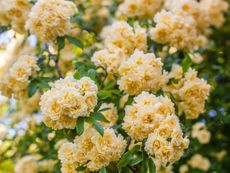 Soft Yellow Plants For A Sunny Pastel Garden
Soft Yellow Plants For A Sunny Pastel GardenClick here for ideas on some pale yellow flower varieties for pastel garden designs.
By Tonya Barnett
-
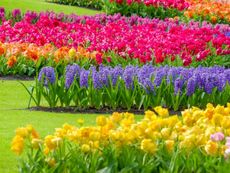 Most Common Flower Color In The World
Most Common Flower Color In The WorldWhat are the most common and least common flower colors in the world? Click here to find out.
By Mary Ellen Ellis
-
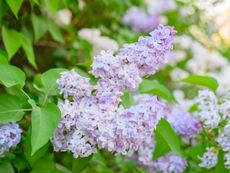 Pastel Plants For A Lovely, Light Purple Flower Garden
Pastel Plants For A Lovely, Light Purple Flower GardenClick here for ideas on some light purple plants for a pretty, pastel garden display.
By Tonya Barnett
-
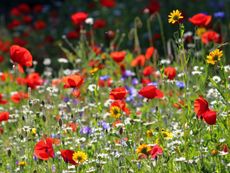 Plant Wildflower Seeds In Fall for A Stunning Spring Display
Plant Wildflower Seeds In Fall for A Stunning Spring DisplayCan you plant wildflower seeds in fall? What makes fall the best time to sow wildflower seeds? Click here for more.
By Tonya Barnett